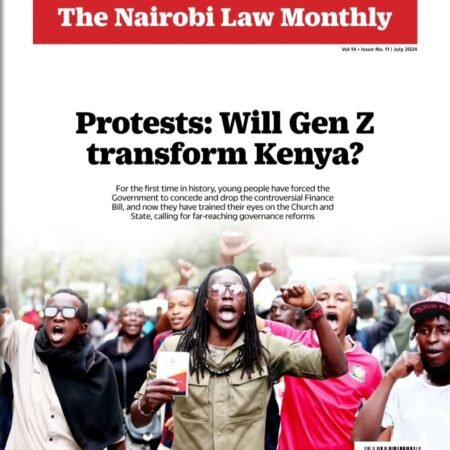By Jacob Oketch
U
-
Sale!
Download Nairobi Law Monthly Magazine July 2024 Edition
Downloads Original price was: KShs200.00.KShs100.00Current price is: KShs100.00.
HURU KENYATTA, Promises Broken by Joe Khamisi is an offering that focuses on the personality of retired president Uhuru Kenyatta. The book is partly biographical because the author examines the president’s life from birth to when he exits the presidency. However, the author does not delve deep into Uhuru’s private life. Instead, he focuses on aspects directly related to his role as a public servant and how it impacted the millions of Kenyans across the country.
The book’s title presupposes that the author will not paint a rosy picture of President Kenyatta’s reign. The book’s opening is about how the name Kenyatta became a brand. The author traces the life of President Jomo Kenyatta from childhood to when he became president. He notes that the name Kenyatta started gaining attention when young Jomo was sent to London by the Kikuyu Central Association to present a petition about the occupied land of the Kikuyu people by the colonialists. From then on, the name grew to be the most revered one in the republic of Kenya.
The author then examines the Kenyatta family’s extensive business concerns, which straddle almost all the significant sectors of Kenya’s economy. A bigger part of the Kenyatta family’s wealth is in the form of land. Here, the author points out the first president’s land acquisition tendencies that saw the family acquire hundreds of thousands of acres across the country. The book also focuses on Kenya’s first First Lady, Mama Ngina Kenyatta’s business engagements and the little-known grievances against her by ordinary citizens concerning land acquisition. The author also examines the founding president’s financial improprieties, like the one about Gatundu Hospital.
The author documents the entry of President Uhuru Kenyatta into politics and his meteoric rise to the pinnacle of public life when he first contested for the presidency in 2002 under the stewardship of the late retired president Daniel Arap Moi. He then looks at the trajectory of Uhuru’s rise to become president in 2013. His stint at the Ministry of Finance, where he devised specific measures to reduce the wage bill, is noted.
The book interrogates Uhuru’s administration. The author often focuses on the president’s violation of the rule of law and court orders. The author also delves into the legislative changes during Uhuru’s reign that elicited public protest or dissatisfaction.
The author analyses the many corruption scandals during Uhuru’s reign-NYS, KEMSA, and NHIF, among many others. He also talks about massive financial wastage in public offices during this time.
Some of the promises the president and his deputy, Dr. William Ruto, gave when they were first elected in 2013 remained unfulfilled at the end of Uhuru’s reign. The most notable is the laptop for standard one pupils. The author gives a detailed account of these promises and how they were fulfilled or otherwise. The author also enumerates the president’s successes, most notably the infrastructural expansion, which includes projects such as the SGR, the Nairobi expressway, the numerous road networks, and the mile-to-mile electricity connectivity.
President Uhuru Kenyatta’s record-breaking foreign travels during his reign featured prominently in this book. The author gives the many countries the president visited and the nature of the business that took him all over the world. He notes that at one time, ordinary Kenyans started making fun of the president’s eternal foreign tours.
The author then examines the intrigues around President Uhuru Kenyatta’s succession. He talks about the handshake between the outgoing president and former Prime Minister Raila Odinga and how it polarized the government and created a wedge between the president and his deputy. He also interrogates the deputy president’s woes after his fallout with his boss and how the tiff rendered the opposition dysfunctional after Mr. Odinga’s rapprochement with the head of state. He also analyses how the president’s overt endorsement of the former prime minister’s candidacy for president reinforced the “project” tag that bedeviled the president himself during his first stab at the presidency in 2002.
The author casts an eye on the issue of the deep state. He defines the phenomenon. He clarifies that the deep state is not a single entity, as many believe. He notes that the deep state manifests in various government departments and the private sector. He further notes that the assassination of fiery legislator JM Kariuki was most likely the doing of security deep state since it was the top security officials who met him last before his body was discovered at Ngong forest.
The author wades into the debate about dynasties and examines the history of some of the top political families, including the Odingas and the Kenyattas, and contrasts them with the humble beginnings of the Deputy President and how this difference gave rise to Dr. Ruto’s hustler political mantra.
This book provides a clear picture of how the jubilee administration governed Kenya – its successes and failures. (


